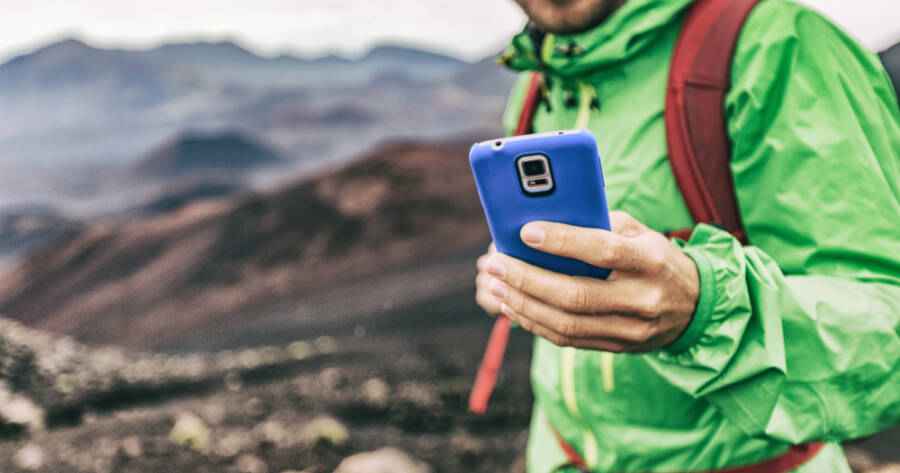Getting lost isn’t just frustrating—it can be dangerous, especially when you’re in the wilderness or exploring remote areas with no cell service. That’s why offline maps are one of the smartest tools you can carry. Apps like Maps.me and Gaia GPS make it possible to navigate confidently without needing a signal. Whether you’re road-tripping through the mountains, hiking deep in a national park, or traveling internationally, offline mapping apps help you stay on track, even when your phone is in airplane mode.
Why Offline Maps Matter
Most people are used to relying on Google Maps or Apple Maps, which work well—until you leave cell coverage. That’s where offline maps come in. These tools allow you to download maps to your device ahead of time, so your phone doesn’t need an internet connection to show your location, plot routes, or track your path.
Both Maps.me and Gaia GPS use your device’s built-in GPS, which doesn’t require mobile data. That means you can see exactly where you are, even in the middle of nowhere. Offline maps are especially useful for campers, hikers, vanlifers, and international travelers who want to avoid roaming fees or spotty service.
Maps.me: Simple, Fast, and Traveler-Friendly
Maps.me is a favorite among budget travelers and casual explorers. It’s known for its clean interface, easy downloading process, and wide global coverage. Before your trip, simply open the app and search for the area you plan to visit. You’ll be prompted to download that region’s map to your device.
Once downloaded, you can:
- Search for addresses, landmarks, and points of interest.
- Get walking, driving, and biking directions without using data.
- Bookmark your favorite spots and add notes for future reference.
Maps.me also offers user-generated travel guides, which include scenic stops, restaurants, and attractions—all saved offline. While it’s not ideal for deep wilderness navigation, it’s a great tool for towns, cities, and road travel, especially if you’re switching between countries or don’t have a data plan.
Gaia GPS: A Powerhouse for Outdoor Navigation
If you’re headed into the backcountry, Gaia GPS is one of the most trusted apps among hikers, off-road drivers, and adventure travelers. It offers high-detail topographic maps, trail overlays, elevation data, and custom waypoints—all of which can be downloaded before you leave service.
To use Gaia GPS offline, follow these steps:
- Open the app while connected to Wi-Fi or mobile data.
- Use the map to zoom into the region you want to explore.
- Tap to download that map area and choose the map layers you want (e.g., satellite imagery, topographic, or public land boundaries).
Once saved, you can track your route in real time, mark campsites, follow known trails, and even see how far you’ve hiked. The app is especially popular among people navigating unmarked trails or national forests, where traditional apps fall short.
Another benefit? Gaia GPS offers route recording, so you can review your path later or retrace your steps if needed. It’s a valuable feature for safety and memory keeping alike.
Tips for Using Offline Maps Effectively
Using offline maps takes a little preparation, but it’s worth the effort. Here are some helpful tips for getting the most from Maps.me and Gaia GPS:
- Download maps in advance while you have Wi-Fi access. Don’t wait until you’re already out of signal.
- Turn on location services on your phone or device. GPS works without mobile data but needs access to your location to function.
- Test the app at home before relying on it in the field. Practice downloading maps, setting waypoints, and navigating routes.
- Bring a portable charger. Running GPS for hours can drain your battery faster than usual.
It’s also a good idea to carry a paper map or backup device for extra safety, especially in rugged terrain or unpredictable weather.
Choosing the Right App for Your Trip
Both Maps.me and Gaia GPS are excellent tools, but they serve different needs. If you’re city-hopping through Europe or navigating remote villages, Maps.me is lightweight, fast, and easy to use. It’s a solid choice for travelers who want convenience and basic navigation features.
On the other hand, if you’re hiking the Rockies, exploring off-grid trails, or planning a multi-day trek, Gaia GPS gives you the detailed map layers and tracking tools needed to stay safe and informed. It’s designed for people who treat navigation as a vital part of their journey.
Stay Oriented, Even When You’re Off the Grid
You don’t need perfect cell service to explore boldly. With offline tools like Maps.me and Gaia GPS, you can navigate with confidence—whether you’re trekking through forests or weaving through winding country roads. These apps turn your phone into a powerful, data-free navigator that works when you need it most.
With just a little prep, you’ll spend less time worrying about directions and more time enjoying the journey ahead. Because every great adventure deserves a good map, even when you’re completely unplugged.

